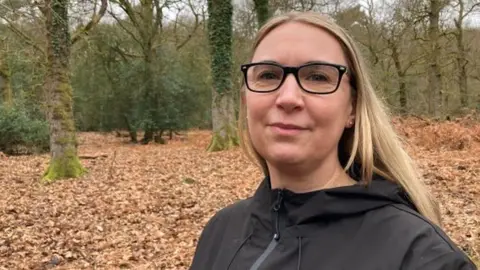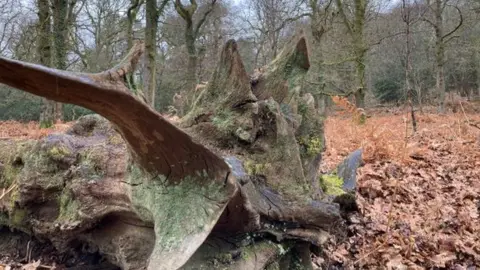Spring has sprung in ancient Gloucestershire woodland
 BBC
BBCSpring has sprung in a woodland in Gloucestershire which has "come alive" over recent days.
The RSPB's Nagshead in Parkend is set across 250 acres in the Forest of Dean.
Oak trees have been planted on the site since the days of Lord Nelson in the 18th Century and it is thought to have been home to woodland for centuries.
Assistant warden Emily Bennett said that the changing seasons were currently evident at the site, with "loads of toads and frogs in the pond".
"They have just sort of come alive in the last couple of days with a lot more frog spawn and toad spawn appearing," she said.
"It's definitely signs of spring. It's really nice to see."

Mary Gagen, chief advisor on forests at the WWF UK, said they have just discovered that the "biggest, oldest trees in our woodlands are storing about twice as much carbon than we used to think".
"But it's also that diversity of their structures," she added.
"They might have a hollow centre. They might have patches of decaying wood and all of those different little bits of a big, beautiful old oak tree and beech tree, like some of the ones we see here, are providing places for our wildlife to live."
Oak trees were initially planted on the site to help build ships in the 18th Century to help the UK fend off invasions and seek out new land to colonise.

In the mid-20th Century conservationists noticed that pied flycatchers that were migrating from Africa in the spring to breed were using bird boxes they had installed.
This led to these local enthusiasts installing increasing numbers of the boxes - with some trees housing up to 410, site manager Lewis Thompson said.
The woodland is also home to rare birds, butterflies, wild boar and pine martins and comes as the number of woodland species is in decline.

Follow BBC West on Facebook, Twitter and Instagram. Send your story ideas to: [email protected]
